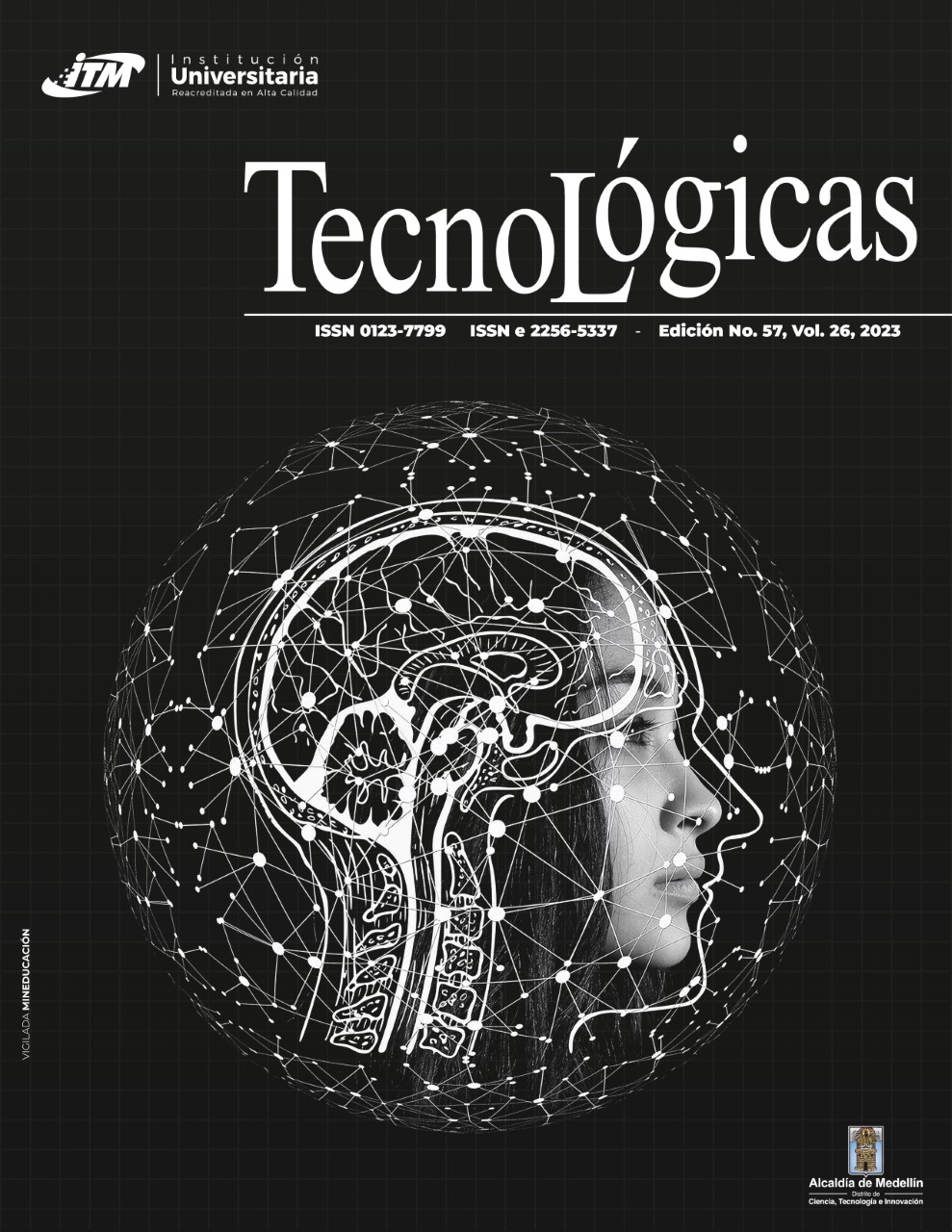Estudio numérico de la relación de recirculación para alcanzar combustión MILD incondicional
Resumen
La combustión moderada o intensa con bajo contenido de oxígeno por dilución (MILD) es un régimen en el cual el combustible se quema en una zona distribuida generando emisiones ultra bajas y sin un frente de llama visible. También conocida como combustión sin llama, se puede obtener por recirculación de gases de combustión en la zona de reacción. Un factor de recirculación basado en la masa recirculada es utilizado en la práctica para caracterizar el régimen sin llama. Sin embargo, la definición original de la combustión MILD se basa en los niveles de temperatura de un reactor. El objetivo de este trabajo consistió en conectar ambos criterios al introducir un parámetro llamado relación de recirculación, el cual es derivado teóricamente de un balance de masa. Esta relación fue calculada numéricamente simulando una red de reactores perfectamente mezclados y realizando un balance de energía utilizando software de código abierto. Esta metodología fue validada contra experimentos y simulaciones reportadas en la literatura. Se realizaron simulaciones para metano, etano, propano e hidrógeno bajo condiciones adiabáticas y dosados entre 0.6 y 1. Los resultados mostraron que existe una relación de recirculación crítica requerida para establecer combustión MILD incondicional, la cual cambia con el combustible y el dosado. En todos los casos estudiados, la relación crítica disminuye a medida que se reduce el dosado. El hidrógeno y el metano requieren la más alta y la más baja relación critica, respectivamente. Los resultados para el hidrógeno sugieren que la dilución externa con dióxido de carbono puede reducir los requerimientos de recirculación para la combustión MILD.
Referencias bibliográficas
K. Kohse-Höinghaus, “Clean combustion: Chemistry and diagnostics for a systems approach in transportation and energy conversion,” Progress in Energy and Combustion Science, vol. 65, pp. 1–5, Mar. 2018. https://doi.org/10.1016/j.pecs.2017.10.001
A. Cavaliere and M. De Joannon, “Mild combustion,” Progress in Energy and Combustion Science, vol. 30, no. 4, pp. 329–366, 2004. https://doi.org/10.1016/j.pecs.2004.02.003
A. E. E. Khalil and A. K. Gupta, “Towards colorless distributed combustion regime,” Fuel, vol. 195, pp. 113–122, May. 2017. https://doi.org/10.1016/j.fuel.2016.12.093
J. A. Wünning, and J. G. Wünning, “Flameless oxidation to reduce thermal no-formation,” Progress in Energy and Combustion Science, vol. 23, no. 1, pp. 81–94, 1997. https://doi.org/10.1016/S0360-1285(97)00006-3
S. Sharma and S. Kumar, “Chapter 3 - Historical background of novel flameless combustion,” in Fundamentals of Low Emission Flameless Combustion and Its Applications, S. E. Hosseini, Ed., Academic Press, 2022, pp. 45–79. https://doi.org/10.1016/B978-0-323-85244-9.00012-5
J. Mi, P. Li, F. Wang, K.-P. Cheong, and G. Wang, “Review on MILD Combustion of Gaseous Fuel: Its Definition, Ignition, Evolution, and Emissions,” Energy & Fuels, vol. 35, no. 9, pp. 7572–7607, Apr. 2021. https://doi.org/10.1021/acs.energyfuels.1c00511
K.-P. Cheong, G. Wang, J. Si, and J. Mi, “Nonpremixed MILD combustion in a laboratory-scale cylindrical furnace: Occurrence and identification,” Energy, vol. 216, p. 119295, Feb. 2021. https://doi.org/10.1016/j.energy.2020.119295
K. P. Cheong, G. Wang, J. Mi, B. Wang, R. Zhu, and W. Ren, “Premixed MILD Combustion of Propane in a Cylindrical Furnace with a Single Jet Burner: Combustion and Emission Characteristics,” Energy and Fuels, vol. 32, no. 8, pp. 8817–8829, Jul. 2018. https://doi.org/10.1021/acs.energyfuels.8b01587
P. Li, B. B. Dally, J. Mi, and F. Wang, “MILD oxy-combustion of gaseous fuels in a laboratory-scale furnace,” Combustion and Flame, vol. 160, no. 5, pp. 933–946, May. 2013. https://doi.org/10.1016/j.combustflame.2013.01.024
J. L. Renteria, L. F. Cardona Sepúlveda, and B. A. Herrera Munera, “Effect of burner angle on the heat transfer of a frit furnace,” Revista Facultad de Ingeniería Universidad de Antioquia, no. 100, pp. 21-34, Feb. 2021. https://doi.org/10.17533/udea.redin.20210216
J. Si et al., “Experimental and Numerical Study on Moderate or Intense Low-Oxygen Dilution Oxy-Combustion of Methane in a Laboratory-Scale Furnace under N2, CO2, and H2O Dilutions,” Energy & Fuels, vol. 35, no. 15, pp. 12403–12415, Jul. 2021. https://doi.org/10.1021/acs.energyfuels.1c01590
Y. Tu, S. Xu, M. Xie, Z. Wang, and H. Liu, “Numerical simulation of propane MILD combustion in a lab-scale cylindrical furnace,” Fuel, vol. 290, p. 119858, Apr. 2021. https://doi.org/https://doi.org/10.1016/j.fuel.2020.119858
G. P. Smith et al., “Gri-mech 3.0. detailed mechanism” [Online]. Available: https://chemistry.cerfacs.fr/en/chemical-database/mechanisms-list/gri-mech-3-0/
E. Ranzi, A. Frassoldati, A. Stagni, M. Pelucchi, A. Cuoci, and T. Faravelli, “Reduced Kinetic Schemes of Complex Reaction Systems: Fossil and Biomass-Derived Transportation Fuels,” International Journal of Chemical Kinetics, vol. 46, no. 9, pp. 512–542, Sep. 2014. https://doi.org/https://doi.org/10.1002/kin.20867
E. Ranzi, C. Cavallotti, A. Cuoci, A. Frassoldati, M. Pelucchi, and T. Faravelli, “New reaction classes in the kinetic modeling of low temperature oxidation of n-alkanes,” Combustion and Flame, vol. 162, no. 5, pp. 1679–1691, May. 2015. https://doi.org/10.1016/j.combustflame.2014.11.030
G. Bagheri, E. Ranzi, M. Pelucchi, A. Parente, A. Frassoldati, and T. Faravelli, “Comprehensive kinetic study of combustion technologies for low environmental impact: MILD and OXY-fuel combustion of methane,” Combustion and Flame, vol. 212, pp. 142–155, Feb. 2020. https://doi.org/10.1016/j.combustflame.2019.10.014
Y. Song et al., “The sensitizing effects of NO2 and NO on methane low temperature oxidation in a jet stirred reactor,” Proceedings of the Combustion Institute, vol. 37, no. 1, pp. 667–675, 2019. https://doi.org/10.1016/j.proci.2018.06.115
D. G. Goodwin, R. L. Speth, H. K. Moffat, and B. W. Weber, “Cantera: an object-oriented software toolkit for chemical kinetics, thermodynamics, and transport processes (2.5.1),” Zenodo, 2021. https://doi.org/10.5281/zenodo.4527812
S. Zabarnick and J. Zelina, “Chemical kinetics of NOx production in a well stirred reactor,” In Intersociety Energy Conversion Engineering Conference, Monterrey, CA, U.S.A, 1994, p. 649. https://doi.org/10.2514/6.1994-3828
F. Wang, P. Li, Z. Mei, J. Zhang, and J. Mi, “Combustion of CH4/O2/N2 in a well stirred reactor,” Energy, vol. 72, pp. 242–253, Aug. 2014. https://doi.org/10.1016/j.energy.2014.05.029
C. Luan et al., “Re-recognition of the MILD combustion regime by initial conditions of Tin and XO2 for methane in a non-adiabatic well-stirred reactor,” Energy & Fuels, vol. 34, pp. 2391–2404, Jan. 2020. https://doi.org/10.1021/acs.energyfuels.9b04177
R. Shan and T. Lu, “Ignition and extinction in perfectly stirred reactors with detailed chemistry,” Combustion and Flame, vol. 159, no. 6, pp. 2069–2076, Jun. 2012. https://doi.org/10.1016/j.combustflame.2012.01.023
S. McAllister, J.-Y. Chen, and A. C. Fernandez-Pello, Fundamentals of Combustion Processes. New York: Springer, 2011, p. 314. https://doi.org/10.1007/978-1-4419-7943-8
Y. A. Cengel and M. A. Boles, Thermodynamics: An engineering approach, 8th edition. New York: McGraw-Hill education, 2015.
A. Cavigiolo, M. A. Galbiati, A. Effuggi, D. Gelosa, and R. Rota, “Mild combustion in a laboratory-scale apparatus,” Combustion Science and Technology, vol. 175, no. 8, pp. 1347–1367, 2003. https://doi.org/10.1080/00102200302356
M. Mayrhofer, M. Koller, P. Seemann, R. Prieler, and C. Hochenauer, “Evaluation of flamelet-based combustion models for the use in a flameless burner under different operating conditions,” Applied Thermal Engineering, vol. 183, Part. 1, p. 116190, Jan. 2021. https://doi.org/10.1016/j.applthermaleng.2020.116190
Descargas
Derechos de autor 2023 TecnoLógicas

Esta obra está bajo una licencia internacional Creative Commons Atribución-NoComercial-CompartirIgual 4.0.

| Estadísticas de artículo | |
|---|---|
| Vistas de resúmenes | |
| Vistas de PDF | |
| Descargas de PDF | |
| Vistas de HTML | |
| Otras vistas | |








